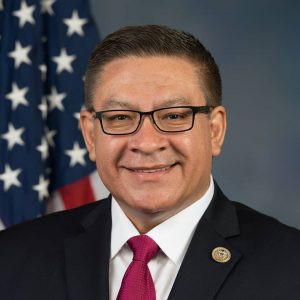Lawmakers lay out agendas for Santa Barbara chamber
IN THIS ARTICLE
- Central Coast Topic
- pacbiztimes Author
By pacbiztimes Monday, March 15th, 2021
Everyone is rolling up their sleeves right now, but getting shots in arms isn’t the only challenge Central Coast leaders are facing.
Several area political leaders came together on March 12 to talk COVID-19, housing, clean energy, wildfire resilience and other hot-button topics in the Santa Barbara South Coast Chamber of Commerce Legislative Update.

Santa Barbara County Supervisor Das Williams, Assemblyman Steve Bennett, State Sen. Monique Limón and U.S. Rep Salud Carbajal spoke about the priorities they’ll be advocating for in various levels of government. Williams, who represents the First District, said Santa Barbara County is persevering in terms of COVID-19 vaccines and case rates.
“The state of the county is that we’re weathering the storm,” Williams said.
He warned that vaccine distribution is slow because of a lack of supplies, and estimated that the county could deliver two or three times as many vaccines as it currently is if it had access to more doses. He estimated the county would re-enter the red tier of the state’s reopening matrix by the end of the month, and he was right: According to new rules announced hours after the update, Santa Barbara County and Ventura County will enter the red tier on March 16. San Luis Obispo County entered the red tier at the beginning of the month. In the red, restaurants, gyms and other businesses can open indoors with capacity limits, and schools have an easier road to reopening.
COVID-19 isn’t the only crisis that needs to be addressed. Bennett spoke about adding resiliency to the state’s budget, to make it less cyclical, and spoke of his experience sorting out Ventura County’s financial issues when he was a county supervisor.
“You can’t do the important things you want to do if you do them fiscally irresponsibly,” Bennett said.
He also wants to make the electrical grid more resilient, which would reduce the number of brownouts and public safety outages.
Limón also talked about the budget issues, at the state level. The state is looking to designate $90 billion to help schools return to in-person instruction safely, $1 billion for wildfire resiliency strategy and $372 million to help speed up the distribution of vaccines.
Additionally, Limón said there is money in the budget to expand on Project Homekey, a program in which the state helped counties buy motels to convert to housing for the homeless. This time, the focus would be on helping counties secure motels to be used as short-term mental health facilities and as senior housing facilities.
“We are hearing your needs,” Limón said. “People think the business community is only concerned about business, but there are so many factors that impact the health of a business in a community.”
Carbajal addressed the federal response to the pandemic. He said the most recent stimulus package, the American Rescue Plan Act, should get the country back to full employment within a year. As part of its $1.9 trillion in spending, it provides grants to restaurants with 20 or fewer locations.
Immigration reform is on the table for this Congress, Carbal said, and the House of Representatives will be voting on the Dream and Promise Act, which will provide a path to citizenship for Dreamers who were brought to the United States as young children.
The House will also be voting on providing a legalization path for farmworkers, and is working on an infrastructure bill of up to $2 trillion. Carbajal also spoke about increasing the amount of green energy the Central Coast can collect and utilize while protecting the region’s public lands from oil and gas drilling.
Related Articles
Letter: The chamber doesn’t represent us
Santa Barbara chamber opposes anti-oil effort Measure P
 Friday, August 15th, 2014
Friday, August 15th, 2014








